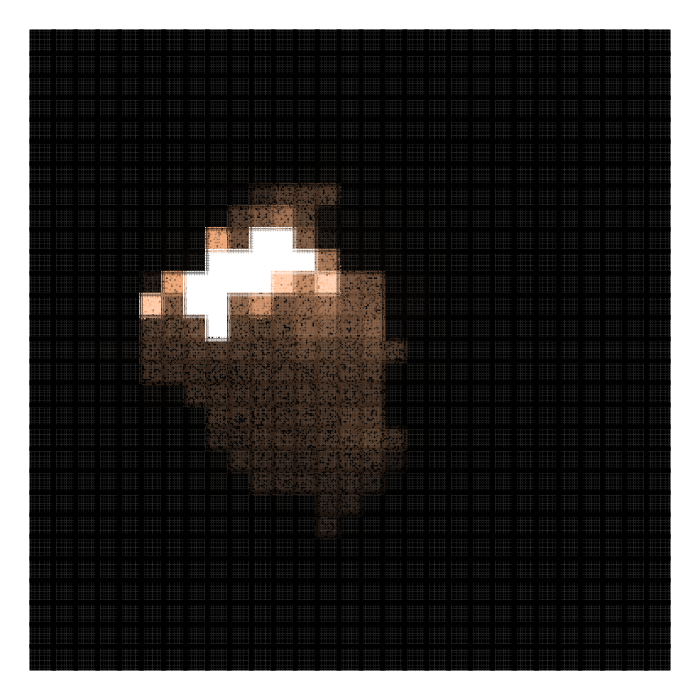On Generative Art
I think generative art has one intrinsic fallacy. It is quite easy to reduce in your mind to “technology”, to a bunch of possibly intimidating tools. But if it expresses well the relation between a creative process and a piece of art – and does this in an interesting way – well…
A friend linked an excellent essay from Anders Hoff, a Norwegian generative artist, knowing that I’ve been working on some generative software for some time now. It inspired me to write down some thoughts of my own. In case you would like to dwell more with the philosophical part, my aesthetics in this essay is inspired partly by Roman Ingarden.
I am an avid drawer, so generative art has a peculiar fascination for me – not just the pleasure of beautiful and specially charged things, but also something extra in there, in generating and coding for dramatic visual result. An aesthetic drive is intrinsic in art, but this flavour is also more specialized.
I think that generative art can’t match the subtle expressive power of our hands. None of the generative work I’ve seen has been anywhere near to Picasso’s drawings. Script-drawn human figures simply aren’t aesthetically that stimulating yet. Though I liked Hoff’s growing structures very much, they would not epitomize human experience in the same way as Picasso’s line drawings or Tove Jansson’s sheets of Moomin graphic do.
Generative art, in comparison to, say, oil painting, is different due to its computer-based work methods (this is of course obvious, but it is also interesting). What these methods do extremely well is make some repetitive tasks easier. In a way they enable experimentation with form that would be too boring and inhumane – too big waste of time without a computer. Also they enable the reuse of other artists’ and engineers’ accomplishments, like 3D rendering frameworks.

frame {
*{ {n=29} x -.5 y -.5}
(n)*{x 1/n} (n)*{y 1/n}
R4{ shading misty_city_by_sea // this shading takes parameters col0, SAT
col0 julia(x/5, y/5, 0, .75) / 256
{ D=4; // recursion level for "R4" structure
SAT=julia(x*2.5, y*2.75, 0, .75) / 256
*julia((x+.1)*2.5, (y+.1)*2.75, 0, .75) / 256
*julia((x+.2)*2.5, (y-.3)*2.75, 0, .75) / 50
}
s 1.2/n
PUSH sub
}
}
sub .3 { sub{ {SAT=SAT-.1} } }
sub 3 { sub{col0 (col0+.1)} }
sub { SQUARE{s 1.2} }

DEF n 29
DEF im .91
fov {z -1.1 x -.5/n y -.5/n}
frame {
*{x -.5 y -.5}
(n)*{x 1/n} (n)*{y 1/n}
R4{ shading misty_city_by_sea
col0 julia(x/5,y/5, 0, im)/256
{ D=4;
SAT=julia(x*2.5,y*2.75, 0, im)/256
*julia((x+.1)*2.5,(y+.1)*2.75, 0, im)/256
*julia((x+.2)*2.5,(y-.3)*2.75, 0, im)/50
}
s 1.2/n
PUSH sub
}
}
sub .3 { sub{ {SAT=SAT-.1} } }
sub 3 { sub{col0 (col0+.1)} }
sub { SQUARE{s 1.2} }
Art becomes a new kind of control problem, and it now highlights and enjoys some new inner structures of what we see and imagine. I like the faint glow of universality – it definitely has educational and intellectual fascination.
I think that generative art should ideally retain two disparate levels of perception: the material and visual qualities of a piece of art, and then a creation story or script and the intellectual journey that led to the end result. It possibly should bear marks of that intense interaction with the spatial environment that the visible work manifests.
Generative art can, I hope, create a dynamic framework for playful interaction of concrete and abstract, of visible and tangible on one hand and ideal and structural on the other. It need not be stale and humourless.
This is exactly what happens to me all the time, this reduction process, cage-locking, habit-forming familiarisation/repulsion of technique, a reduction of the sphere of interest, fixation into observed and discovered forms, fading of the heightened spatial interaction from the picture. And I try to keep my head above the water and fly.

